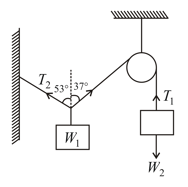Consider the three cases, as shown in the figure. Assume the friction to be absent everywhere, the pulleys to be light and the string connecting the blocks to other block or fixed vertical wall to be light and inextensible. Let and be the tension in the strings, as shown in figure , figure and figure , respectively. Then, pick the correct comparison between the given tensions (for the instant shown) from the options below.
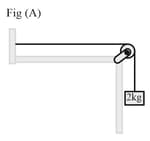
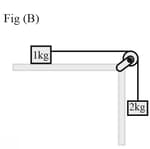
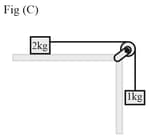




Important Questions on Newton's Laws of Motion I
Consider the system, as shown in the figure. The pulley and the string are light, and all the surfaces are frictionless. The tension in the string is
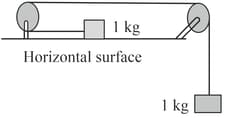
As shown in the following mass pulley system, pulleys and strings are massless. One end of the string is pulled by force . The acceleration of the block will be
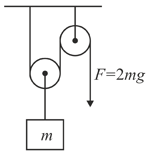
In the figure shown, a balloon is pressed against a wall. It is in equilibrium and maximum compressed state.

force of the balloon on the hand of the man, force of the balloon on the wall, Friction and weight of the balloon.
Which of the following statements are correct?
Consider a cart being pulled by a horse with a constant velocity. The horse exerts a force on the cart. (The subscript indicates the force on the cart due to the horse). The first subscript denotes the body on which force acts and the second due to which it acts.
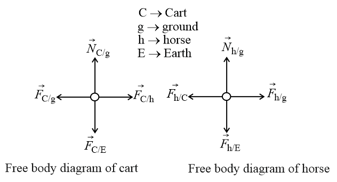
Choose the correct statement(s).
Weight is supported by two strings, inclined at and to the vertical. The tensions in the strings are and , as shown in the figure. If these tensions are to be determined in terms of , using a triangle of forces, which of these triangles should you draw? (Block is in equilibrium.)
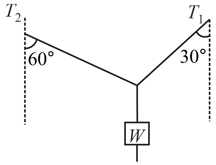
A uniform sphere of weight and radius is being held by a string of length , attached to a frictionless wall, as shown in the figure. The tension in the string will be:
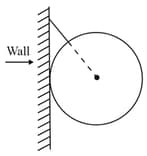
Two weights and in equilibrium and at rest are suspended, as shown in the figure. Then the ratio is
